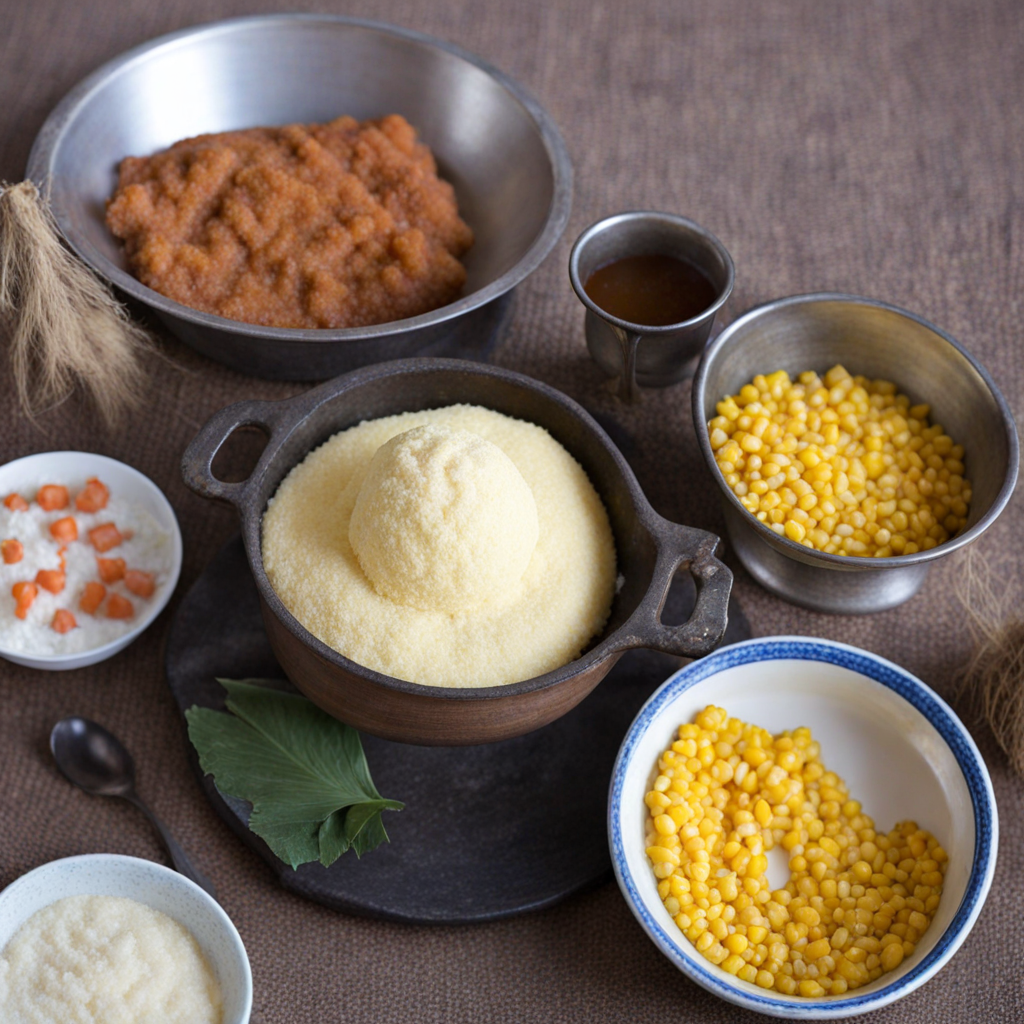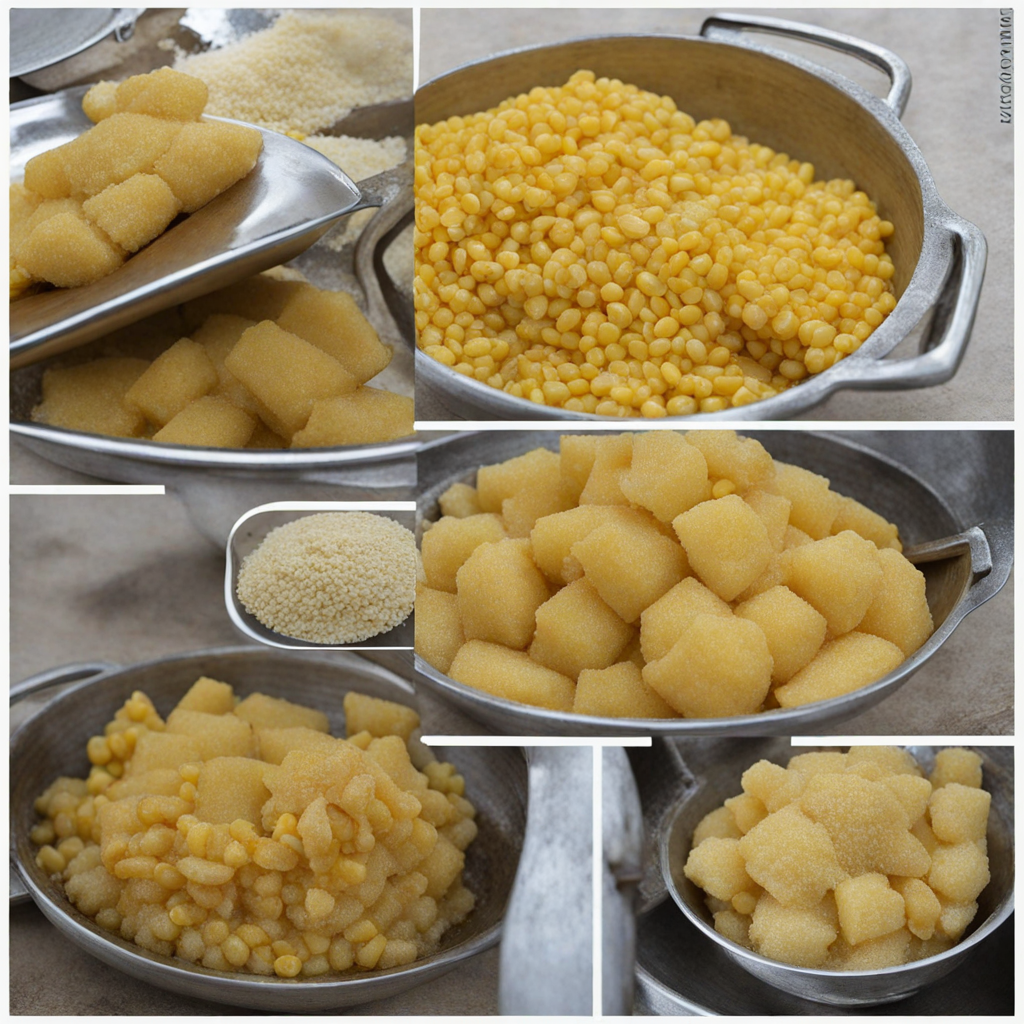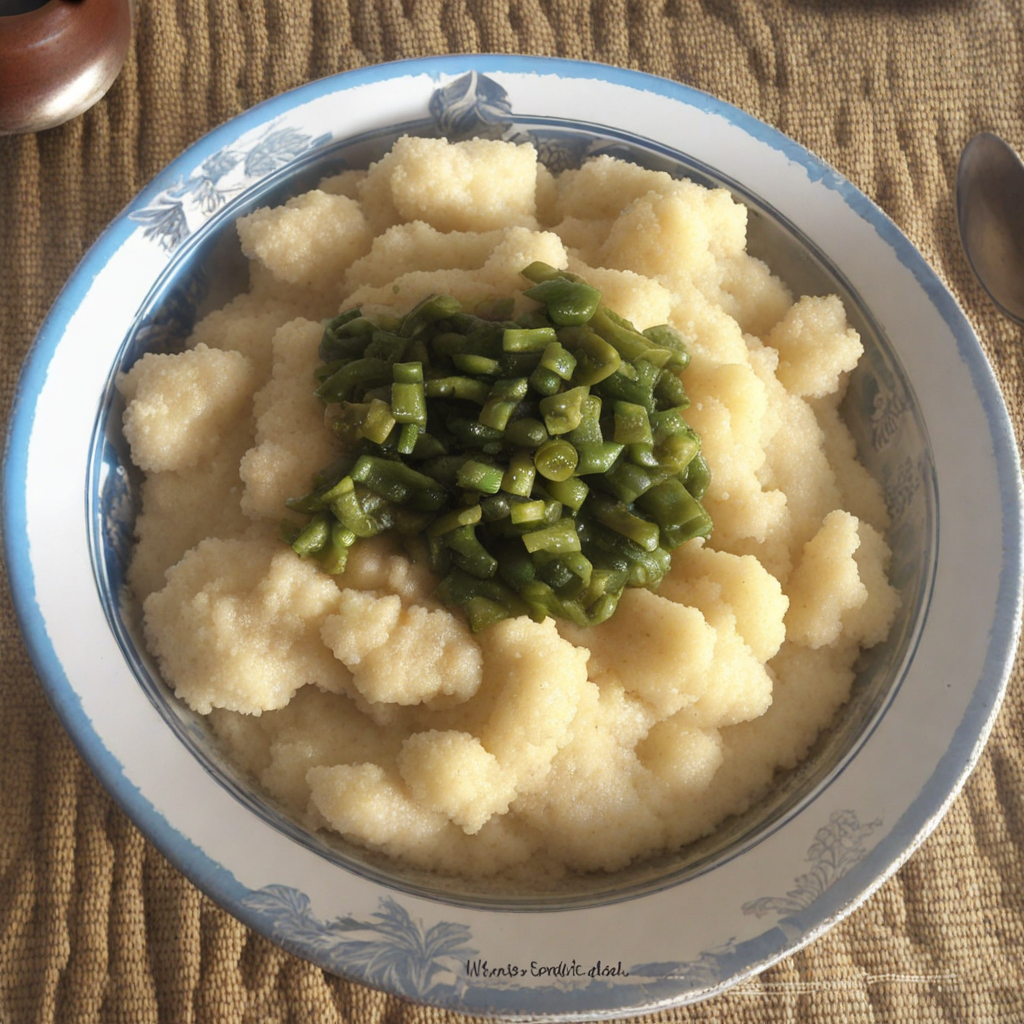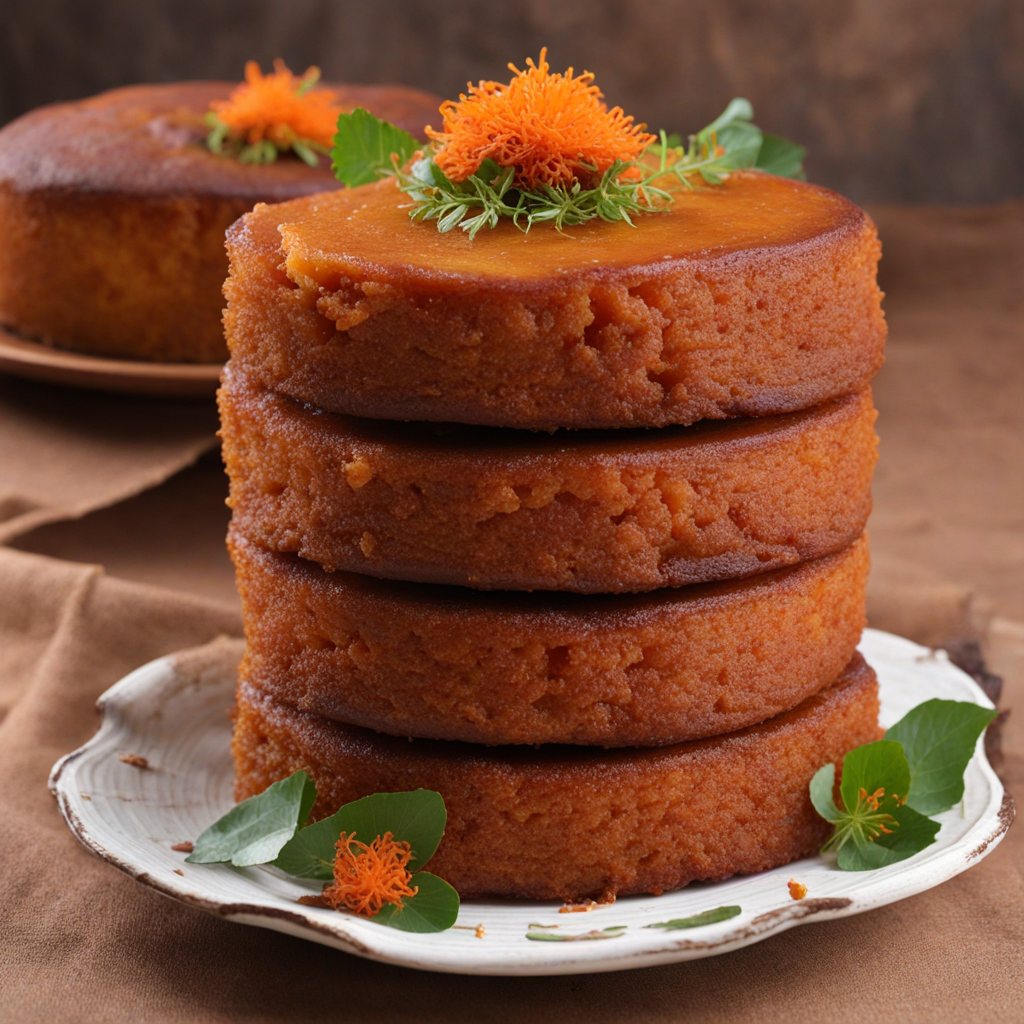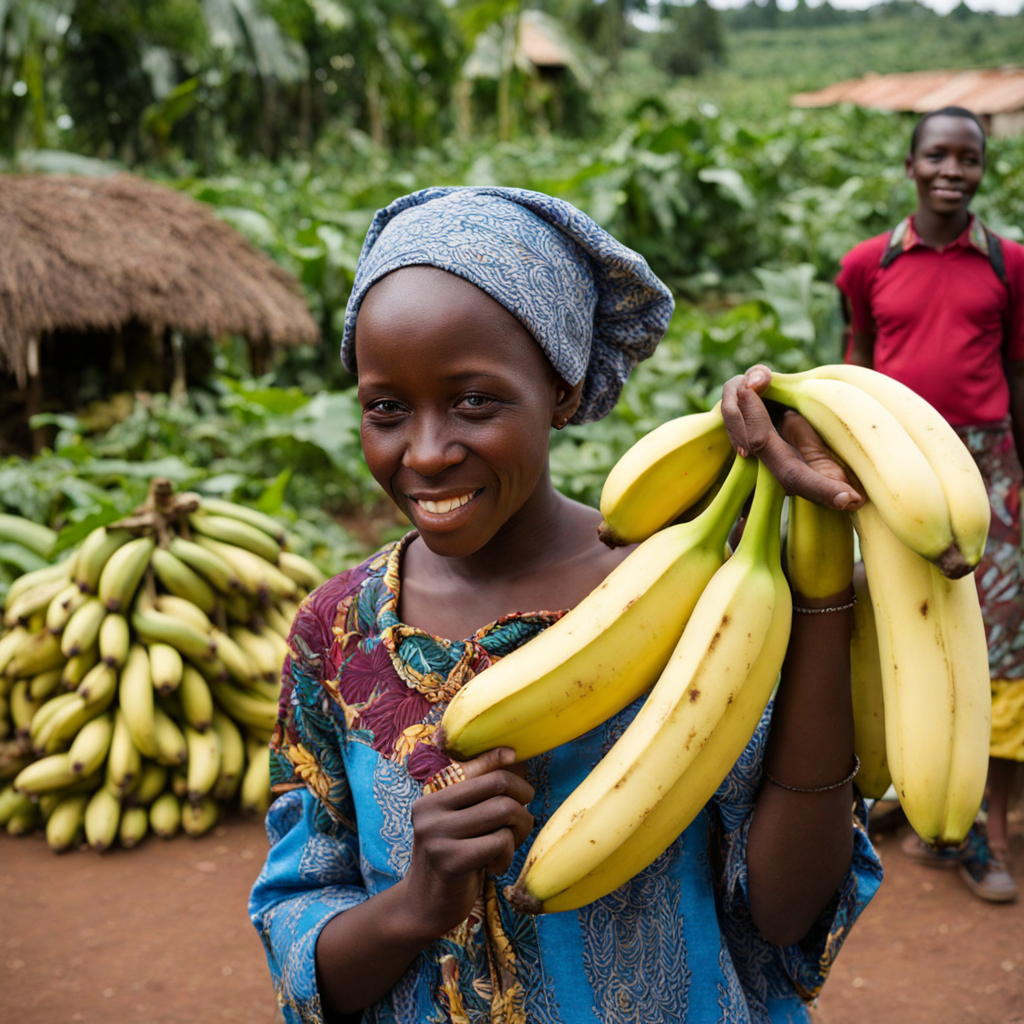Umutsima
Umutsima is a traditional Rwandan dish that beautifully showcases the rich agricultural heritage of the region. Made primarily from a combination of maize (corn) and cassava flour, this dish is often enjoyed as a staple food, providing a hearty and nutritious option for locals. The ingredients are mixed together with water to form a thick, porridge-like consistency, which is then cooked until it reaches the desired texture. The result is a soft, slightly sticky dish that has a neutral flavor, making it a versatile base for a variety of accompaniments. What sets Umutsima apart is its ability to absorb flavors from accompanying dishes, often served alongside stews, vegetables, or sauces that are rich in spices and herbs. In many Rwandan households, it is common to pair Umutsima with meat, beans, or a vegetable medley, creating a balanced meal that caters to different palates. The dish not only nourishes but also brings a sense of community, as it is often shared amongst family and friends during gatherings or celebrations. For those exploring Umutsima for the first time, expect a culinary experience that emphasizes comfort and simplicity. The texture is reminiscent of polenta or mashed potatoes, yet it possesses a unique essence that reflects the Rwandan way of life. Enjoying Umutsima transports you to the heart of Rwanda, where food is not just sustenance but a means of connecting with culture and tradition. Its adaptability allows for endless culinary experimentation, whether you choose to savor it with traditional Rwandan flavors or incorporate it into contemporary dishes.
How It Became This Dish
Umutsima: A Culinary Heritage of Rwanda Umutsima, a traditional Rwandan dish, is much more than just a staple food; it is a symbol of the country's culture, history, and resilience. This unique food, made primarily from cassava and sometimes mixed with maize, represents the agricultural practices of Rwanda and the deep connection between the Rwandan people and their land. To understand Umutsima fully, we must delve into its origins, cultural significance, and its evolution over time. #### Origins The roots of Umutsima can be traced back to the agricultural practices of the Rwandan people, who have cultivated cassava for centuries. Cassava (Manihot esculenta) is a drought-resistant tuber that thrives in the tropical climates of Africa, making it an ideal crop for the hilly terrains of Rwanda. Indigenous to South America, cassava was brought to Africa by Portuguese traders in the 16th century. It was quickly adopted by various African communities due to its resilience and adaptability. The Rwandan landscape, characterized by its rolling hills and fertile volcanic soil, provided an ideal environment for cultivating cassava alongside other staple crops like beans and sweet potatoes. As the population grew and agricultural practices evolved, Umutsima became a dietary staple, especially in rural areas, where it served as both a food source and an economic asset. #### Cultural Significance Umutsima holds a prominent place in Rwandan culture, serving as a symbol of hospitality, community, and tradition. It is often prepared during significant cultural events, family gatherings, and celebrations, marking its importance in social cohesion. The dish is typically made by boiling the cassava until soft and then mashing it into a smooth, porridge-like consistency. It is frequently served with various accompaniments, such as vegetables, meat stews, or peanut sauce, demonstrating its versatility and ability to adapt to different culinary styles. In Rwandan society, sharing food is an act of kindness and unity. When Umutsima is served, it reflects the values of generosity and community spirit, as it is often enjoyed in a communal setting. Families gather around a pot of Umutsima, sharing stories and laughter, reinforcing bonds and cultural ties. The act of preparing and serving Umutsima is often passed down through generations, with traditional recipes and cooking methods preserved by mothers and grandmothers. This dish also plays a crucial role in the Rwandan identity, embodying the spirit of resilience that has characterized the nation throughout its tumultuous history. Following the genocide in 1994, many Rwandans turned to their culinary traditions to rebuild their communities and restore a sense of normalcy. Umutsima became a symbol of healing and togetherness, reminding people of their shared heritage and the importance of unity in the face of adversity. #### Development Over Time As Rwanda has undergone significant changes in its socio-economic landscape, so too has Umutsima. The modernization of agriculture and the introduction of new cooking techniques have influenced how Umutsima is prepared and consumed. While traditional methods remain prevalent, urbanization has led to the emergence of new adaptations of the dish. In urban areas, Umutsima has been modernized to accommodate busy lifestyles, with pre-packaged versions becoming available in markets. These instant varieties offer convenience, allowing Rwandans to enjoy Umutsima without the lengthy preparation process. Additionally, the dish has made its way into restaurants and cafés, where chefs experiment with flavors and presentations, merging traditional elements with contemporary culinary trends. Despite these changes, the essence of Umutsima remains intact. It continues to be a source of pride for many Rwandans, who see it as a representation of their agricultural heritage and cultural identity. Efforts to promote traditional foods like Umutsima are also part of a larger movement to preserve Rwanda's culinary heritage in the face of globalization. Local organizations and initiatives are dedicated to educating younger generations about traditional foods, ensuring that the recipes and stories associated with Umutsima endure. #### Nutritional Value and Sustainability Umutsima is not only culturally significant but also nutritionally valuable. Cassava is rich in carbohydrates, providing a substantial energy source, while its low protein content can be complemented with various side dishes. The combination of Umutsima with legumes, vegetables, or meat enhances its nutritional profile, making it a balanced meal that supports the health and well-being of Rwandan families. From a sustainability perspective, cassava is an environmentally friendly crop. It requires less water than many other staple crops and can grow in poor soil conditions, making it a reliable food source in regions affected by climate change. As Rwanda continues to prioritize food security and sustainable agricultural practices, Umutsima stands as a testament to the importance of traditional crops in ensuring resilience and sustainability. #### Conclusion Umutsima encapsulates the rich agricultural history and cultural identity of Rwanda. From its origins as a resilient crop to its role in fostering community and healing, the dish reflects the values and traditions of the Rwandan people. As it evolves with modern influences, Umutsima remains a cherished staple, bridging the past and present while celebrating the resilience and unity of the Rwandan spirit. Through Umutsima, we gain insight into the heart of Rwandan culture—one that values connection, sustenance, and the enduring legacy of its culinary heritage. Whether enjoyed during a family gathering or served in a modern café, Umutsima continues to nourish not just the body but also the soul of a nation, reminding everyone of the importance of food in weaving together the fabric of community life.
You may like
Discover local flavors from Rwanda


